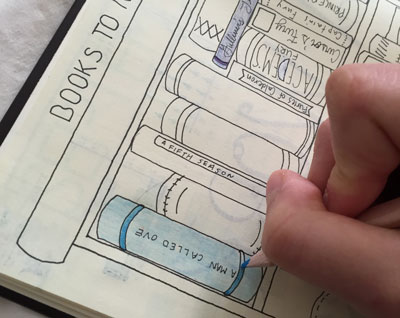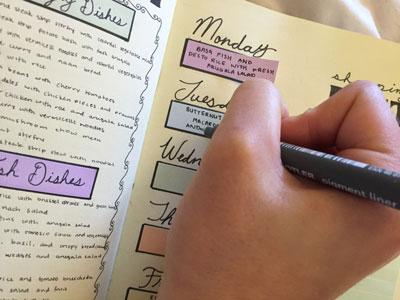Art Journaling for Children:
A Creative Path to Self-Expression, Emotional Healing, and Personal Growth
Art journaling, a powerful form of self-expression and self-care, has gained popularity in recent years for its ability to foster emotional healing and personal growth in children. This versatile and accessible practice combines elements of visual arts, writing, and mixed media to create a unique and deeply personal form of self-expression. In this comprehensive article, we will explore the concept of art journaling for children, its benefits, and how you can guide your child on their own art journaling journey.
What is Art Journaling for Children?
Art journaling is a creative practice that involves combining visual arts, writing, and mixed media elements in a journal format. It is a flexible and individualized process, allowing children to express their thoughts, feelings, and experiences in a way that feels most authentic to them. Art journals can take many forms, from traditional sketchbooks and notebooks to digital formats, and can include a wide range of materials such as paint, collage, photography, and found objects.
Benefits of Art Journaling for Children:
Art journaling offers numerous benefits for both emotional well-being and personal growth in children. Some of the key benefits include:
-
Emotional Healing: Art journaling provides a safe space for children to express and process difficult emotions, which can help in overcoming trauma, grief, and other challenging experiences.
-
Self-Reflection: By allowing children to explore their thoughts, feelings, and experiences in a creative and non-judgmental way, art journaling promotes self-awareness and introspection.
-
Stress Relief: The process of creating art and engaging in creative activities has been shown to reduce stress and anxiety in children, making art journaling a valuable tool for self-care and relaxation.
-
Problem Solving: Art journaling can help children gain clarity and new perspectives on personal challenges, enabling them to develop problem-solving skills and build resilience.
-
Communication Skills: Art journaling offers children a non-verbal way to communicate their feelings and thoughts, which can be particularly beneficial for those who struggle with verbal communication.
-
Creativity and Imagination: Art journaling encourages children to think outside the box and use their imagination, fostering their creativity and artistic abilities.
Getting Started with Art Journaling for Children:
Introducing art journaling to your child may seem daunting, but with a few simple steps and some basic materials, you can help them embark on a fulfilling and therapeutic journey.
-
 Choose a Journal: Select a suitable journal for your child to use for their art journaling practice. This can be a sketchbook, a bullet journal, a notebook with blank pages, or even a digital platform. Encourage your child to personalize their journal by decorating the cover or adding their name.
Choose a Journal: Select a suitable journal for your child to use for their art journaling practice. This can be a sketchbook, a bullet journal, a notebook with blank pages, or even a digital platform. Encourage your child to personalize their journal by decorating the cover or adding their name. -
 Gather Art Supplies: Provide your child with a variety of art materials to explore and experiment with, such as colored pencils, markers, crayons, paint, collage materials, and found objects. This will allow them to discover their preferred medium and develop their unique style.
Gather Art Supplies: Provide your child with a variety of art materials to explore and experiment with, such as colored pencils, markers, crayons, paint, collage materials, and found objects. This will allow them to discover their preferred medium and develop their unique style. 
Create a Safe and Encouraging Environment: Set up a dedicated space for your child's art journaling practice, where they can feel comfortable and free to express themselves. Offer guidance and encouragement, but also give them the freedom to explore their creativity without judgment.
-
Offer Prompts and Themes: To help your child get started, you can suggest prompts or themes to inspire their art journaling. This can be anything from emotions, memories, or experiences to specific art techniques or materials. Encourage your child to interpret the prompts in their own way and emphasize that there is no right or wrong way to approach their journal.
-
Encourage Regular Practice: Establishing a regular art journaling practice can help your child reap the full benefits of this creative outlet. Encourage your child to set aside time each day or week to work on their art journal, even if it's just for a few minutes. Regular practice will help them develop their artistic skills and foster emotional growth.
-
Be Supportive and Patient: Your child's art journal is a deeply personal and private space. Be supportive and patient as they explore their creativity, emotions, and experiences. Resist the urge to critique or judge their work, as this can hinder their self-expression and growth.
-
Share Your Own Experiences: If you are also an art journaler or are just starting out yourself, share your own experiences and creations with your child. This can help create a sense of camaraderie and mutual support, as well as provide an opportunity for you both to learn from each other.
Art Journaling Techniques for Children:
To further support your child in their art journaling journey, consider introducing them to some of the following techniques:
-
 Collage: Encourage your child to experiment with collage by incorporating magazine clippings, photographs, and other materials into their art journal. This technique allows them to explore their feelings and memories in a safe and creative way.
Collage: Encourage your child to experiment with collage by incorporating magazine clippings, photographs, and other materials into their art journal. This technique allows them to explore their feelings and memories in a safe and creative way. 
Drawing and Painting: Provide your child with different drawing and painting materials to help them express their emotions and thoughts through color and visual art. Give them the freedom to choose their subjects and styles, allowing them to explore different aspects of their emotional world.
-
Mixed Media: Introduce your child to mixed media techniques by combining different materials and art forms in their journal. This can include using paint, markers, and collage elements together, or even incorporating digital art and photography.

Writing and Poetry: Encourage your child to incorporate writing and poetry into their art journal as another form of self-expression. This can include adding captions or titles to their artwork, writing short poems or stories, or even creating their own characters and narratives.

Mindfulness and Reflection: Integrate mindfulness and reflection into your child's art journaling practice by encouraging them to focus on the present moment and their emotions as they create. This can help promote emotional regulation and self-awareness.
Art journaling is a powerful and accessible tool for promoting emotional healing, self-expression, and personal growth in children. By providing your child with the necessary materials, guidance, and encouragement, you can help them embark on a fulfilling and therapeutic journey that fosters creativity and emotional well-being. With consistent practice and support, your child can develop invaluable skills and insights that will serve them well throughout their lives.

